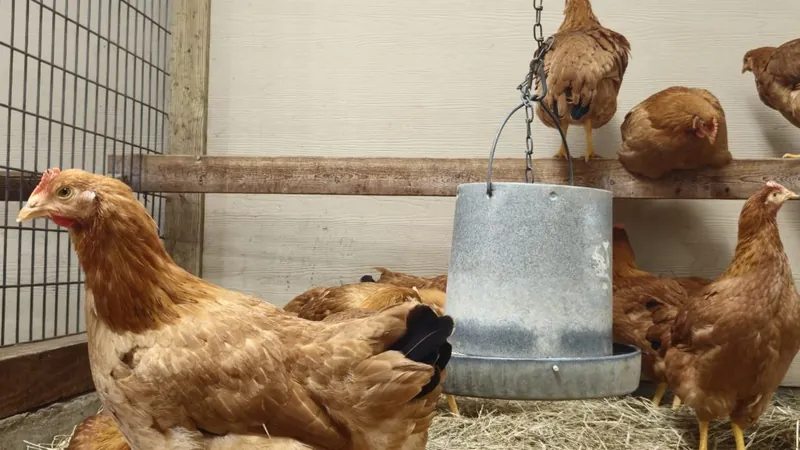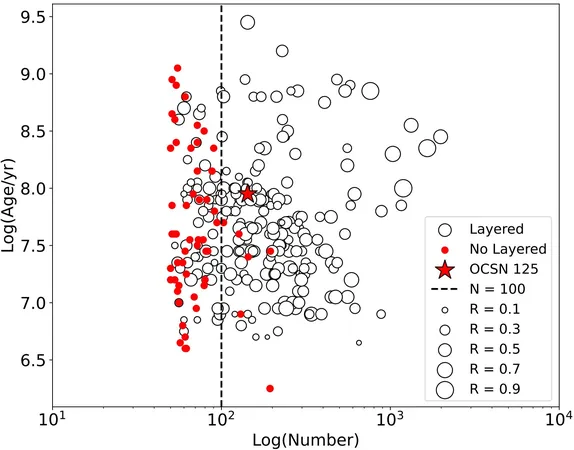
Why Are There No New Human Bird Flu Cases in the U.S.? Experts Search for Answers!
2025-05-19
Author: Olivia
In recent months, health officials in the U.S. have been sounding the alarm for greater vigilance against bird flu. Yet, a puzzling phenomenon has emerged: no new human cases have been reported in three months. What could be behind this unexpected silence?
The Bird Flu Mystery: Why the Silence?
Experts are left scratching their heads. Is it due to government funding cuts weakening case searches? Are immigrant farm workers, who have largely been affected, hesitant to seek testing amidst fears of deportation under recent policies? Or could it simply be a natural downturn in infection rates?
Jennifer Nuzzo, director of the Pandemic Center at Brown University, voiced concerns, stating, "We just don’t know why there haven’t been cases. It’s reasonable to assume infections are happening but are simply not being detected.”
H5N1's Impact: A Growing Threat?
The H5N1 bird flu has been wreaking havoc globally among wild birds and poultry for years, and it began affecting humans in the U.S. last year. Over the past 14 months, 70 infections have been reported, primarily among dairy and poultry farm workers. While one person died, most cases have been relatively mild.
The last confirmed cases, as per the CDC, occurred in February across states like Nevada, Ohio, and Wyoming. California, once a hotspot accounting for 75% of infections in dairy cattle, has seen a stark drop in testing – plummeting from around 50 tests a month to merely a few in March and April.
A Natural Decline or Underreporting?
Recent discussions among U.S. health officials point to a possible seasonal pattern of bird flu, with outbreaks peaking during the fall and early winter due to the migration of wild birds—key transmitters of the virus. This could suggest a natural but possibly temporary ebb in cases.
However, Michael Osterholm, an infectious disease expert at the University of Minnesota, noted that any severe human infections would likely be reported. The CDC's own data reflects decreased virus activity in animal populations, which may explain the drop in human cases.
Concerns Over Monitoring and Reporting Efforts
Experts are also worried about potential gaps in monitoring following significant government staff cuts. Keith Poulsen from the Wisconsin Veterinary Diagnostic Laboratory highlighted resignations within critical agencies like the USDA, which can impair the effectiveness of bird flu surveillance.
Dr. Gregory Gray expressed confidence that no cases are being intentionally hidden, but other experts suspect milder infections are slipping through the cracks. Angela Rasmussen, a virologist from Canada, echoed concerns that immigrant workers might be too fearful to report infections.
The CDC's Stance: Low Risk, Mounting Research
Despite the stalled case numbers, the CDC maintains that the general public's risk remains low, although it’s notably higher for individuals in direct contact with poultry or cattle. An ongoing assessment from the agency indicates a "moderate risk" that bird flu could potentially spark a future pandemic.
Research initiatives are still underway, including a significant study at Texas A&M University examining past H5N1 exposure among dairy workers. Project leader David Douphrate emphasized the crucial need for proactive measures.
The Hidden Threat: Cats and Bird Flu
Curiously, researchers are also pressing for targeted surveillance among domestic cats, given that infected cats were among the first indicators of bird flu in dairy cows. Over 120 cases of infected cats have been identified, primarily in those that succumbed to the virus.
Kristen Coleman from the University of Maryland is collecting blood samples to explore previous exposure in felines. Yet, progress is slow and funding for this vital work remains uncertain.
In Conclusion: The Call for Action!
As this unsettling mystery continues to unfold, experts are urging for a ramp-up in surveillance and preventive measures. With uncertainty looming and the potential for infection still present, the stakes could not be higher. It’s time to pay attention and prepare!









 Brasil (PT)
Brasil (PT)
 Canada (EN)
Canada (EN)
 Chile (ES)
Chile (ES)
 Česko (CS)
Česko (CS)
 대한민국 (KO)
대한민국 (KO)
 España (ES)
España (ES)
 France (FR)
France (FR)
 Hong Kong (EN)
Hong Kong (EN)
 Italia (IT)
Italia (IT)
 日本 (JA)
日本 (JA)
 Magyarország (HU)
Magyarország (HU)
 Norge (NO)
Norge (NO)
 Polska (PL)
Polska (PL)
 Schweiz (DE)
Schweiz (DE)
 Singapore (EN)
Singapore (EN)
 Sverige (SV)
Sverige (SV)
 Suomi (FI)
Suomi (FI)
 Türkiye (TR)
Türkiye (TR)
 الإمارات العربية المتحدة (AR)
الإمارات العربية المتحدة (AR)